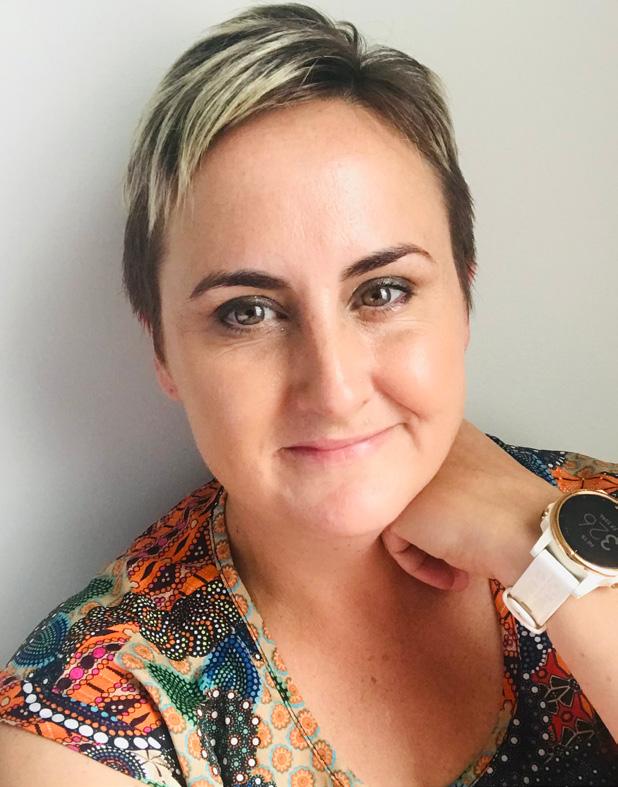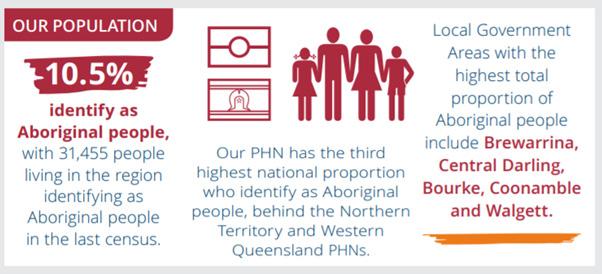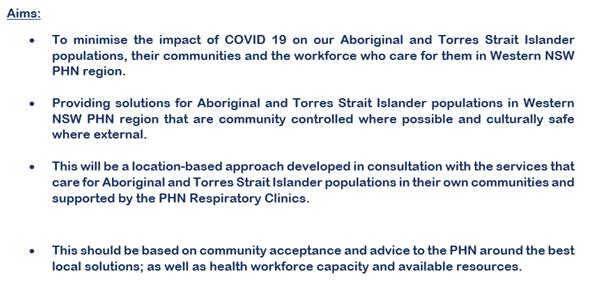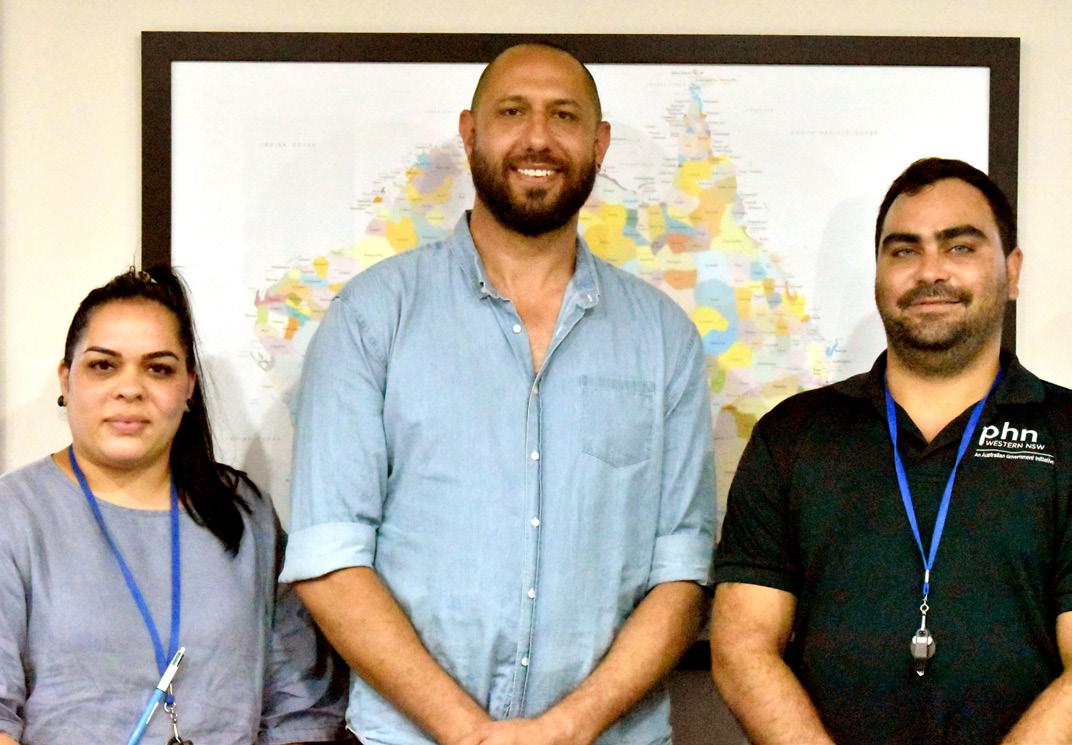
5 minute read
Rapid service design and cultural safety
TABITHA JONES COVID-19 Response Coordinator Western NSW PHN
Learnings from our General Practitioner Led Respiratory Clinics in Western NSW
Advertisement
When the COVID-19 pandemic was declared in February 2020, the history of pandemics suggested a severe and detrimental impact would be felt by our Aboriginal communities.
The Western NSW Primary Health Network (WNSW PHN) region spans 53.5% of NSW, caring for over 313,600 people, with 10.5% of our population identifying as Aboriginal or Torres Strait Islander. We had significant challenges ahead of us in keeping our community safe during the response to COVID-19. We were concerned about the wellbeing of our Aboriginal communities and our ability to keep our most vulnerable members of the population safe.
WNSW PHN is challenged by vast geography, an under-resourced health workforce and the health disparities of rural and remote NSW. Like all challenges, this also brought about the opportunity to review and redesign the way that we deliver care.
The development of General Practitioner Led Respiratory Clinics (GPRC)
When tasked with the job of setting up the GP-led Respiratory Clinics in Western and Far Western NSW, one of the most challenging questions was ‘how do we establish these clinics rapidly whilst trying to create services that cater to the needs of our Aboriginal communities?’
The Government released the Management Plan for Aboriginal and Torres Strait Islander Populations and, together, we made a list of key objectives to try and consider in the clinic development derived from that plan.
At that point, we started researching and having conversations with our services, councils and communities about how we could answer this very question.
We consulted with our Aboriginal Medical Services (AMS) and Aboriginal Community Controlled Health Organisation (ACCHO) to determine what their preferences were for accessing care, and the feedback was both insightful and location-specific in line with our aims.
We determined that some services had vulnerable staff that needed to be kept safe. Protection of the health workforce was a top priority in our planning as we are a region with existing, problematic health workforce shortages.
There were also some services that nominated to take the lead role. We supported these > applications, with two of our nine clinics being AMS or ACCHO led.

Some of our larger AMSs requested to provide GPs to support the staffing of clinics in our larger centres where we needed multiple GP rosters. Some of our clinics run by mainstream practices had a crossover of staff from the local AMS. Our aim was to create a familiar face for clients, enhance cultural safety and encourage the symptomatic patient traffic away from the usual practice to minimise the risk to their other clients and staff.
Our innovations and local solutions
One important gesture of support to our Respiratory Clinics was from a community group — The Scrub Cap Angels, based in Grenfell. They wanted to contribute to the initiative and their team of volunteers made over 100 scrub caps for the clinics in colourful Australian animals and Aboriginal prints.
These gifts were a bright and heartfelt tribute to the generosity of those clinicians running the clinics and were a practical addition to the somewhat surgical and sterile clinics. The Aboriginal prints were a beautiful complement to the work we were doing to increase cultural safety.
We realised that the sterile clinic environment may not create a safe and welcoming place for Aboriginal people to visit. We looked at signage and artwork from Aboriginal artists that may have added to the visual appeal of the clinics. However, in the fast-paced establishment phase, we did not have artwork that was local, purposeful or available to us to use.
We did encourage the use of the fantastic COVID-19 resources available from the Aboriginal Health and Medical Research Council and NSW Health to support Aboriginal patients attending the clinics.
The design and set up of the clinics were rapid and the services were developed at scale and pace. When designing the model of care, it was our wish to have cultural safety training available to all the staff prior to opening, but with restrictions on training and gatherings, this was not a task we were able to achieve on time.
What this did, however, was to create an idea that the PHN should have these resources available for existing and future services. This is where we engaged Nathan Peckham, an Aboriginal man descended from the Tubbah Gah clan within the Wiradjuri nation of New South Wales. A contemporary artist, Nathan leans upon the teachings of his Elders in his artwork which is a rich mixture of modern media and methods to give life to his unique brand of artwork and design.

Nathan has been helping us to develop an online learning experience that is an introduction to Aboriginal community and culture; a starting point for clinicians in their journey towards cultural competency that encourages them to engage with the local Aboriginal community and Aboriginal culture. It is based heavily around art and graphic design and is an easily accessible, online package that can be used by any health workers. As a PHN, it will also give us a suite of art and graphics that we can use in service delivery and design that is local, meaningful and available for the development of signage, resources or webbased media into the future.
So, while we may have fared well on the global scale in our management of the COVID-19 pandemic, our work is not done. The pandemic has exposed many cracks in the health and social care systems for vulnerable members of the population. We need to learn from the work we have done and have better plans in place to support the care of our first nations people, both in a crisis situation and, just as importantly, in circumstances where we have the luxury of time on our side to plan care. May the lessons we have learnt and the tools we have developed take us another step towards improving our cultural safety in the delivery of health in Western NSW and the design of new models of care. ha











